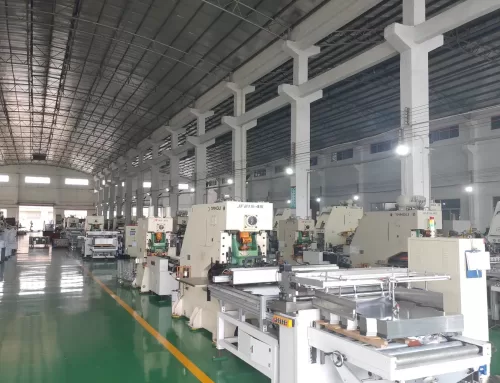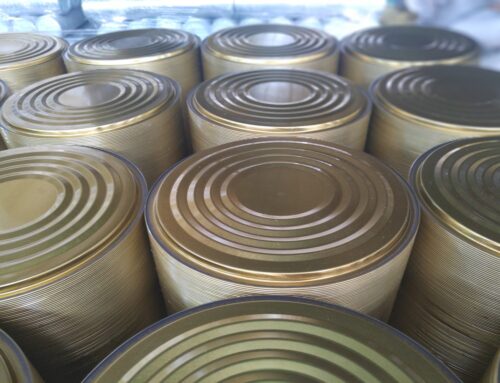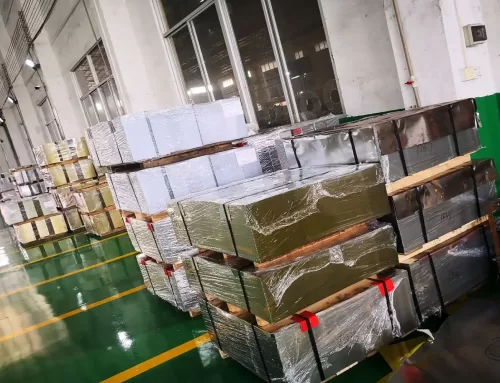Welding Defects and Analysis in Tin Can Manufacturing Processes
Common welding defects and their causes in the welding process are analyzed as follows:
(1) Cold Welding in Can Body
Mechanical Factors:
1. Iron Plate: Incorrect perimeter length, non-parallel iron plate angles, excessive burrs, and holes in the iron plate.
2. Misalignment in Positioning Dies: Incorrect height/low, incorrect horizontal setting, too tight or loose, issues with guiding rails.
3. Z-shaped Groove: Basic setting errors, incorrect head setting, wear in Z-shaped groove.
4. Output Conveyor Belt: Too high or low, incorrect conveyor belt speed.
5. Conveying Error: Issues in material dropping and between can-supporting rails.
6. Shaping of Copper Wire: Wear on shaping wheel, poor quality of copper wire.
Electrical Factors:
1. Welding Current Setting: Low welding current.
2. Short Circuit in Secondary Welding Circuit: Insulation issues, hidden objects in the overused Z-shaped groove area.
3. Welding Wheel: Wear causing misalignment.
4. Current Regulator: Malfunction.
(2) Cold Welding at the Beginning of the can Body
1. Iron Plate: Angle and roundness issues in the iron plate. Adjust as close to ideal as possible.
2. Entry Gearbox: Misalignment in chain, unequal chain spacing, ceramic damage on chain pointers.
3. Lower Welding Arm: Loose hanging screws.
4. Z-shaped Groove: Contaminants, wear at the end of Z-shaped groove, incorrect height at the end.
5. Welding Geometric Position: Inaccurate setting, incorrect push E value, excessive welding pressure, incorrect setting of push claw.
6. Molds: Wear on roller shaft, non-guiding function of positioning roller, errors in excessive position setting.
7. Copper Wire: Tin traces not centered, wear in welding wheel grooves, rapid and inflexible rotation of copper wire.
8. Welding Speed: Excessive gap between can bodies.
(3) Severe Metal Extrusion (Hot Welding)
Mechanical Defects:
1. Geometric Errors in Welding Process: Non-parallel can body edges, incorrect optimal position of welding wheel, worn welding wheel grooves.
2. Iron Plate: Burr formation during shearing, excessive thickness variation in iron plate.
3. Positioning Dies: Too low setting.
4. Damage to Can Body During Conveyance: Problems in transfer between can-supporting guide rails and excessive guide rails.
Electrical Defects:
Welding Current: Excessive welding current, welding speed v less than its v limit, current controller malfunction.
(4) Formation of Burr at Welding Points, Refer to Figure 3-49 (9)
Mechanical Defects:
1. Iron Plate: Cutting burrs, burrs in material plate, significant thickness variation in the same batch of iron plates, contaminants on the iron plate, coating in the welding seam area.
2. Welding Dies: Incorrect height, relative position to welding horizontal SE (misalignment), scratching.
3. Welding Wheel Geometric Position: Optimal position of welding wheel, wear in welding wheel grooves, non-parallel welding wheel axes.
4. Welding Pressure: Too low.
Electrical Defects:
Welding Current: Excessive setting, current control error.
(5) Incomplete Welding at Welding Points
Mechanical Defects:
1. Iron Plate Shearing: Incorrect shearing angle, incorrect perimeter.
2. Welding Dies: Too low, too high.
3. Synchronization: Incorrect synchronization angle.
Electrical Defects:
1. Machine Setting and Detectors: Decrease in current opening, welding monitor: key in the wrong position, step function activated.
2. Offset, Refer to Figure 3-49 (12).
(6) Lack of Overlapping Amount at the Beginning of the Can Body
1. Iron Plate Shearing: Incorrect angle, incorrect perimeter.
2. Welding Dies: Input roller too high, incorrect horizontal setting, welding dies too loose.
3. Welding Geometric Position: Height of Z-shaped groove, optimal position of welding wheel, upper welding wheel before lower welding wheel, non-parallel welding wheel axes.
4. Synchronization: Excessive synchronization angle, v too small.
(7) Lack of Overlapping Force at the End of the Can Body
1. Iron Plate Shearing: Incorrect angle, incorrect perimeter.
2. Welding Dies: Incorrect horizontal setting, welding roller not tightened.
3. Incorrect Welding Geometric Position
4. Output Conveyor Belt: Too high or too low, conveyor belt speed too fast or too slow.
(8) Excessive Overlapping Amount
1. Iron Plate: Shearing of iron plate, excessive perimeter of iron plate, excessive thickness variation in iron plate.
2. Welding Dies: Too tight, too high.
3. Z-shaped Groove: Wear, excessive overlapping amount (Z-groove error).
(9) Insufficient Overlapping Amount (Across the Entire Length of the Weld Seam)
1. Iron Plate Shearing: Perimeter of iron plate too short.
2. Welding Dies: Too loose, too low, welding roller not adjusted properly.
3. Welding Wheel Welding Geometric Position: Incorrectly adjusted optimal position of welding wheel.
4. Welding Pressure: Too high, should not exceed 60 dan.
5. Circularization Station: Iron plate opens too wide after circularization.
(10) Formation of Irregular Weld Points, Refer to Figure 3-49 (14)
Mechanical Defects:
1. Iron Plate: Too dirty or dusty, scratches in welding area, burrs in material plate.
2. Synchronization: v less than v, welding wheel drive chain too loose.
Electrical Defects:
1. Welding Current: Damaged thyristor.
2. Welding Wheel: Damaged.
3. Copper Wire Clutch: Slipping.
(11) Severe Circularization Defects at the End of the Can Body, Refer to Figure 3-49 (11)
1. Iron Plate Shearing: Non-parallel edges.
2. Material Dropper: Poor circularization adjustment, gap in rollers, issues in one-sided circularization of iron plate, improper adjustment of load spring for roller forces, improper positioning of other rollers (edge of iron plate).
3. Welding Pressure: Too high.
4. Synchronization v too high: Excessive gap between can bodies.
(12) Formation of Spiral Shape, Refer to Figure 3-49 (14)
1. Iron Plate Shearing: Incorrect angle.
2. Synchronization: Feeding claw misalignment, additional conveyor device misalignment.
3. Welding Dies: Too tight, not aligned with the centerline of the conveyor belt, incorrect adjustment of upper positioning roller, ceramic roller not tightened.
4. Entry Gearbox: Chain pointer misalignment, wear in chain guide head, unequal wear, poor chain adjustment.
(13) Breakdowns Caused by Overheating, Refer to Figure 3-49 (5)
Iron Plate: Contamination.
(14) Welding Defects Legend: Refer to Figure 3-49.
The following legends are mostly obtained in the laboratory using a microscope. The observed welding samples in the illustrations are significantly influenced by factors such as the quality, thickness, coating of the iron plate, welding speed, and machine adjustments. The arrows in the illustrations indicate the direction of welding wheel movement during welding.



